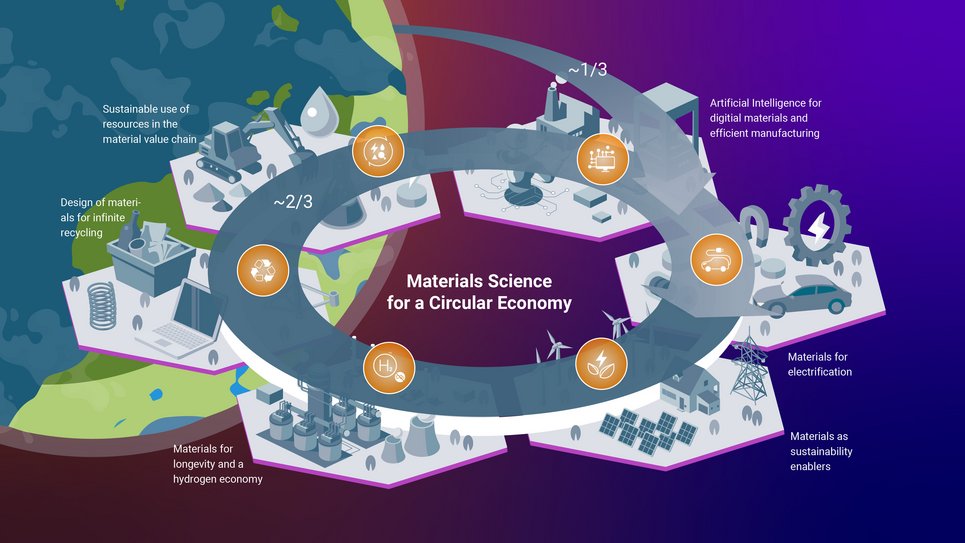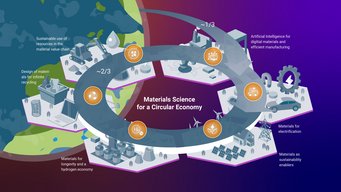Online lecture on sustainable metals by Prof. Dierk Raabe
Lecture on 7th May, 2.00 - 3.30 pm - no registration required

This lecture is about sustainable metals. Metallic alloys have enabled technological progress over millennia and have an enduring importance in our society. They paved the path of human civilization with load-bearing applications that can be used under the harshest environmental conditions, from the Bronze Age onwards. Only metallic materials encompass such diverse features as strength, hardness, workability, damage tolerance, joinability, ductility and toughness, often combined with functional properties such as corrosion resistance, thermal and electric conductivity and magnetism.
Today we produce and consume about 2 billion tons of metals every year. The huge and accelerating demand for load-bearing (structural) and functional metallic alloys in key sectors such as green energy supply, health, durable construction, robotics, passenger safety and modern transportation is resulting in predicted production growth rates of up to 200% until 2050.
Most of these materials, specifically steel, aluminium, nickel and titanium, require a lot of energy when extracted and manufactured and these processes emit large amounts of greenhouse gases and pollution. This means that the huge success of metallic products and industries also brings them into a position where they have an important role in addressing the rapidly rising environmental crisis.
The availability of metals (most of the elements used in structural alloys are among the most abundant), efficient mass producibility, low price and amenability to large-scale industrial production (from extraction to the metal alloy) and manufacturing (downstream operations after solidification) have become a substantial environmental burden: worldwide production of metals leads to a total energy consumption of about 53 Exa-Joules (8% of the global energy used) and almost 30% of industrial CO2-equivalent emissions (4.4 Giga-Tons of carbon dioxide equivalent) when counting only steels and aluminium alloys (the largest fraction of metal use by volume) [1].
This lecture discusses methods for improving the direct sustainability of structural metals, in areas including reduced-carbon-dioxide primary production, recycling, scrap-compatible alloy design, contaminant tolerance of alloys and improved alloy longevity. The lecture also discusses the effectiveness and technological readiness of individual measures and also shows how novel structural materials enable improved energy efficiency through their reduced mass, higher thermal stability and better mechanical properties than currently available alloys [2].
When: 7th May, 2.00-3.30 pm German time
Speaker: Prof. Dierk Raabe, director at the MPIE and head of the department Microstructure Physics and Alloy Design
Where: https://ruhr-uni-bochum.zoom.us/j/99553373076?pwd=YXFCMjFiQkM5aUtvekZESDBDU0JFUT09 - Meeting ID: 995 5337 3076, Password: 449575
Host: The Center for Interface-Dominated High Performance Materials (ZGH) at Ruhr-Universität Bochum
Please feel free to forward this invitation to other interested researchers at your institution and beyond. Early career researchers, like PhD students, are welcome as well!
[1] YouTube: Sustainable Metallurgy and Green Metals; https://www.youtube.com/watch?v=1kihsaLSxv0
[2] Raabe D, Tasan CC, Olivetti EA. Strategies for improving the sustainability of structural metals. Nature. 2019 Nov; 575 (7781): 64-74.
